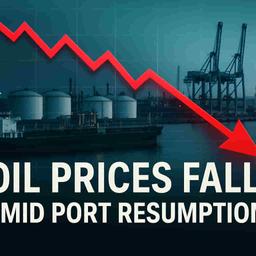Fortis Healthcare, under MD & CEO Ashutosh Raghuvanshi, is focusing on profitability and growth. The company plans to increase hospital bed capacity by 50% in 3-4 years, largely through brownfield expansion and acquisitions. Profit margins are targeted to rise from 20.5% in FY25 to 25% by FY28. Analysts at Nomura and ICICI Securities are optimistic about significant earnings growth, projecting operating earnings to nearly double by FY28. However, the company faces headwinds from increased debt due to recent investments, with Net debt to EBITDA rising to 0.96x. Fortis aims to become net cash positive within two years. The performance of its diagnostic arm, Agilus Diagnostics, also remains key for investor sentiment.
Fortis Healthcare is strategically enhancing its core hospital business with a dual focus on profitability and expansion, led by Managing Director and Chief Executive Officer Ashutosh Raghuvanshi. The company aims for substantial growth, planning to boost its hospital bed capacity by approximately 50% over the next three to four years. A significant portion of this expansion will be 'brownfield,' involving adding beds to existing facilities, which allows Fortis to leverage current infrastructure and scale up operations efficiently. The company is also pursuing growth through acquiring new hospitals and managing facilities via Operation and Maintenance (O&M) agreements.
This expansion, coupled with a drive for operational efficiency, is expected to significantly improve profit margins. Fortis Healthcare targets increasing its profit margins in the hospitals segment to 25% by FY28, up from 20.5% recorded in FY25. Analysts at Nomura anticipate a margin expansion of around 430 basis points in the hospitals segment between FY25 and FY28 due to brownfield expansion. Similarly, ICICI Securities projects Fortis's operating earnings to nearly double by FY28 from FY25 levels and forecasts profit margins to reach 24% by FY28, indicating strong potential earnings growth if these estimates are met.
However, the company's growth strategy has led to increased debt. Fortis Healthcare's Net debt to EBITDA ratio has risen to 0.96 times as of September 2025, from 0.16 times a year prior. The company's objective is to achieve a net cash positive position within the next couple of years to mitigate this leverage. Another factor to watch is the O&M agreement with Gleneagles Hospitals, part of the same promoter group. While Fortis earns service fees, Gleneagles operates with lower profit margins. A potential future full-scale merger could impact Fortis's overall profit margins negatively. Furthermore, the performance of its diagnostics unit, Agilus Diagnostics, needs steady improvement in revenue growth rates to bolster investor confidence, despite recent positive steps.
This news has a significant impact on the Indian stock market, particularly the healthcare sector. Fortis Healthcare is a prominent player, and its growth strategies, financial health, and performance directly influence investor sentiment and stock valuations within the industry. Analyst ratings and margin expansion targets can drive trading activity and investment decisions for many investors.
Rating: 8/10
- Brownfield Expansion: This refers to expanding or upgrading existing facilities or infrastructure, rather than building entirely new ones from scratch (which would be greenfield expansion). For Fortis, it means adding more beds or improving existing hospital sites.
- Operation and Maintenance (O&M) Route: This is an agreement where one company (Fortis) manages the operations of facilities owned by another company (Gleneagles Hospitals), earning service fees for its expertise.
- Net Debt to EBITDA: This is a financial ratio used to assess a company's ability to pay off its debt. It compares the company's total debt (minus cash and cash equivalents) to its earnings before interest, taxes, depreciation, and amortization (EBITDA) over a period, usually a year. A higher ratio indicates higher leverage and potential financial risk.
- Basis Points: A basis point is one-hundredth of a percentage point. So, 430 basis points equal 4.3 percentage points. It's a common unit used in finance to express small changes in percentages, especially for interest rates or margins.
- FY25, FY28F: These refer to Fiscal Years. FY25 means the fiscal year ending in 2025. FY28F means the fiscal year ending in 2028, and 'F' indicates that these are forecasted or estimated figures.






